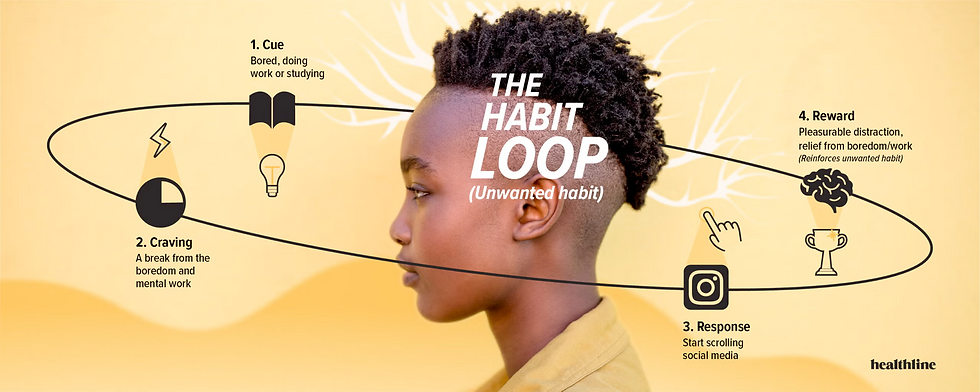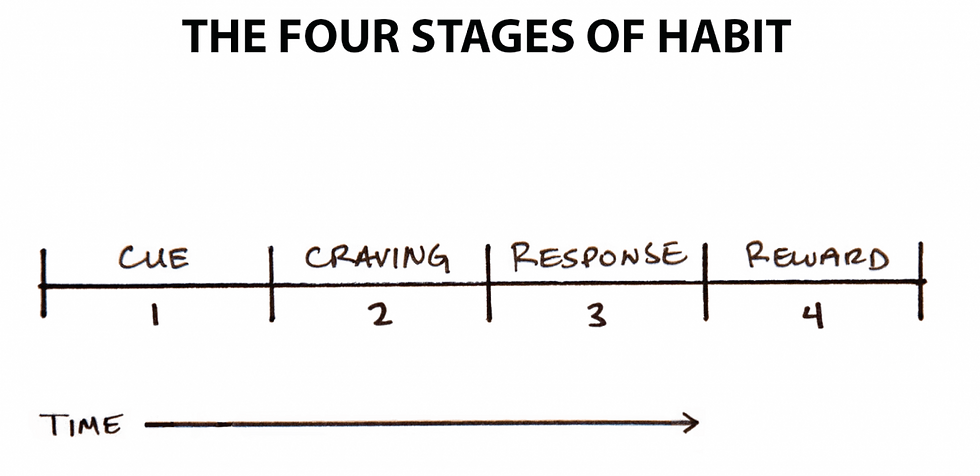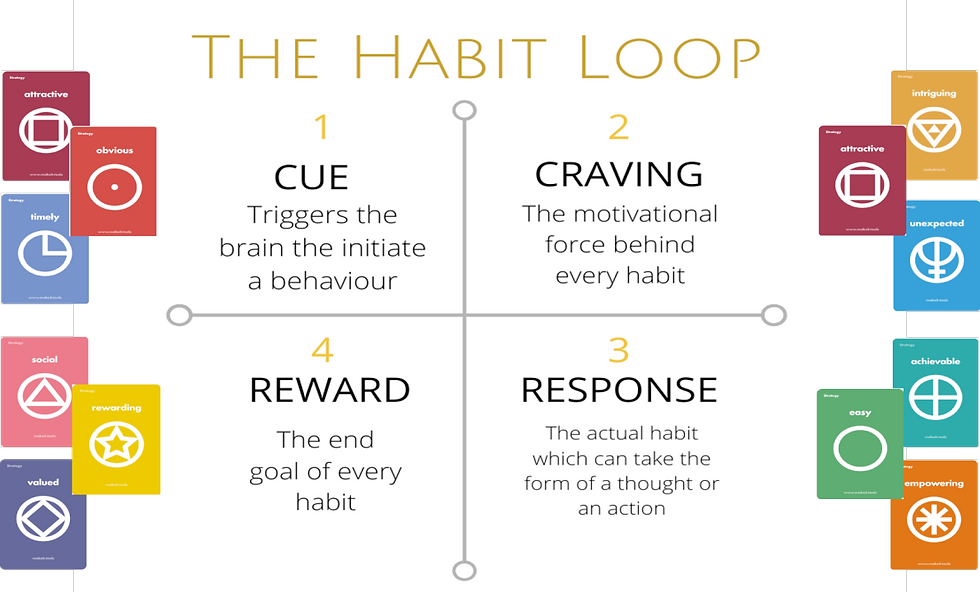James Clear Theories On Habit Formation And Behavioral Change
- Ethan Carter

- Jul 31
- 8 min read

Introduction to James Clear and His Habit Formation Theories
James Clear is a leading figure in the field of behavioral science and self-improvement, widely acclaimed for his pragmatic approach to habit formation and lasting behavioral change. Best known for his bestselling book Atomic Habits, Clear has revolutionized how individuals and organizations understand the process of building good habits and breaking bad ones. His theories on habit formation and behavioral change distill complex psychological principles into actionable strategies that anyone can implement.
Habit formation refers to the process by which behaviors become automatic through repetition, while behavioral change encompasses the broader effort to modify patterns of action, often to improve well-being or performance. Clear’s work bridges these concepts, emphasizing that sustainable transformation originates in small, consistent adjustments rather than drastic overhauls.
The impact of James Clear’s theories extends beyond personal development; they influence professional productivity, leadership, health, and education. By leveraging the principles outlined in Atomic Habits, countless readers have enhanced their routines, achieved goals, and cultivated positive mindsets.
For those interested in maximizing productivity alongside habit formation, exploring can complement Clear’s frameworks by fostering better information retention and organization.
I. Background: The Science of Habits and Behavioral Change

The scientific study of habits has evolved considerably—from early behaviorist models to contemporary cognitive frameworks. Traditional theories often focused on stimulus-response patterns, as seen in B.F. Skinner’s operant conditioning or Charles Duhigg’s habit loop concept. James Clear’s contribution lies in translating this scholarly knowledge into clear, actionable steps designed for everyday life.
At the heart of habit science is the habit loop, which comprises four essential components: cue, craving, response, and reward. These elements interact to create automatic behaviors that bypass conscious decision-making. Understanding this loop is crucial to both forming new habits and dismantling unwanted ones.
Cue: A trigger that initiates the behavior.
Craving: The motivational force driving the behavior.
Response: The actual behavior performed.
Reward: The benefit or satisfaction gained, reinforcing the habit.
For a detailed overview of habit psychology, authoritative resources like the American Psychological Association’s research on habit formation provide valuable insights.
In addition, for those organizing ideas digitally or looking to enhance cognitive frameworks alongside habits, understanding can be a powerful complement to behavioral change systems.
A. Classic Models vs. James Clear’s Model
Classical habit theories such as Skinner’s operant conditioning emphasize reinforcement through rewards or punishments to shape behavior. Meanwhile, Charles Duhigg popularized the habit loop concept in The Power of Habit, highlighting how cues and rewards drive habitual actions.
James Clear refines these models by breaking down the habit loop into actionable laws—known as the Four Laws of Behavior Change—which make habit formation accessible without sacrificing scientific rigor. This approach not only simplifies complex psychology but also integrates identity-based change, an area often overlooked in earlier models.
Aspect | Classical Models | James Clear’s Model |
|---|---|---|
Focus | Stimulus-response, reinforcement | Four Laws: Cue, Craving, Response, Reward |
Emphasis | Behavior modification | Identity transformation |
Practical Application | Often theoretical | Highly actionable |
B. The Habit Loop: Four-Step Pattern
The habit loop underpins much of Clear’s framework:
Cue: This could be a time of day, location, emotional state, or preceding action that triggers the habit.
Craving: The desire or urge that motivates you toward the behavior.
Response: The habit itself—what you do in reaction to the craving.
Reward: The positive outcome that reinforces the habit loop.
For example, if a person wants to develop a running habit:
Cue: Seeing running shoes placed by the door.
Craving: Desire for increased energy or stress relief.
Response: Going for a run.
Reward: Feeling accomplished and energized afterward.
This cycle repeats until the behavior becomes automatic. Behavioral psychology studies show that each stage is critical: removing or altering any component can disrupt or build habits effectively.
II. Core Concepts of James Clear’s Habit Theory

James Clear’s Atomic Habits introduces a comprehensive model based on four core principles—known as the Four Laws of Behavior Change—that align directly with the stages of the habit loop. His habit theory stresses that tiny changes compound over time, leading to significant behavioral transformation.
A. The Four Laws of Behavior Change
Make It Obvious (Cue): Design your environment so that cues for good habits are visible and unavoidable. For example, placing a water bottle on your desk encourages hydration.
Make It Attractive (Craving): Pair habits with enjoyable activities or reframe them positively to increase motivation. Listening to your favorite podcast while exercising can make workouts more appealing.
Make It Easy (Response): Reduce friction by simplifying behaviors—preparing gym clothes beforehand makes morning workouts easier to start.
Make It Satisfying (Reward): Immediate rewards reinforce habit completion, such as tracking progress visually or celebrating small wins.
These laws apply not only to adopting new habits but also reversing bad ones by inverting each law:
Formation Law | Breaking Bad Habits Equivalent |
|---|---|
Make It Obvious | Make It Invisible |
Make It Attractive | Make It Unattractive |
Make It Easy | Make It Difficult |
Make It Satisfying | Make It Unsatisfying |
Applying these laws strategically enables both habit formation and behavioral change. For example, if you want to quit smoking:
Remove ashtrays (Make it Invisible)
Avoid social settings where smoking is glamorized (Make it Unattractive)
Replace cigarettes with gum (Make it Difficult)
Track smoke-free days with rewards (Make it Unsatisfying if broken)
B. The Three Levels of Behavior Change
Clear categorizes behavior change into three progressive layers:
Outcomes: The specific results you want (e.g., losing weight).
Processes: The systems and habits you engage in daily (e.g., daily note-taking).
Identity: Your beliefs about yourself (e.g., seeing yourself as a healthy person).
The most powerful level is identity-based habits, where change happens because you adopt a new self-image rather than just chasing goals. This shift creates lasting transformation because behaviors align with who you believe you are.
"The ultimate form of intrinsic motivation is when a habit becomes part of your identity." — James Clear
For further understanding of identity-driven change mechanisms, see research on self-perception theory.
III. Practical Applications: Habits in Daily Life and Work

James Clear’s theories translate seamlessly into practical strategies for enhancing both personal routines and professional environments.
A. Personal Productivity and Academic Success
In academia and personal productivity, habit formation is essential. For example:
Establishing consistent study sessions anchored by cues (e.g., studying right after breakfast).
Using effective note-taking methods improves knowledge retention and reduces procrastination.
Time blocking and habit stacking—pairing new habits with existing ones—can streamline complex tasks.
Clear’s approach encourages starting small; even five minutes dedicated to focused study daily builds momentum over time.
B. Organizational and Team Performance
In workplace settings, Clear’s concepts help foster cultures where productive habits thrive:
Leaders can promote Make It Easy by removing bureaucratic obstacles.
Teams benefit from shared cues (start-of-day rituals) that reinforce collaboration.
Corporate wellness programs incorporate habit tracking for nutrition and exercise.
Military units and professional sports teams also adopt these principles, recognizing that marginal gains through consistent habits lead to peak performance (see examples at Harvard Business Review).
C. Digital Tools and Systems for Habits
Modern technology amplifies habit-building through digital tools:
Habit trackers like Habitica or Streaks provide visual progress and rewards.
Reminders and calendar integrations reinforce cues and responses.
Combining these with organizational systems such as the enables structured reflection on progress and continuous improvement.
Leveraging tech can automate key parts of Clear’s model—making habits more obvious and satisfying through immediate feedback loops.
IV. Benefits of James Clear’s Approach

James Clear’s methods stand out because they combine simplicity with scientific grounding, making them widely adopted across demographics and industries.
A. Simplicity and Accessibility
By breaking down habit formation into four clear laws, Clear removes barriers for those overwhelmed by self-improvement jargon. His frameworks require no specialized training yet deliver profound impact across health, education, business, and more.
B. Compounding Improvements and Marginal Gains
One key advantage is embracing the principle of aggregation of marginal gains: improving by just 1% daily leads to almost 37 times better outcomes over a year.
This math underscores how small daily improvements compound exponentially—a core tenet in Atomic Habits supported by behavioral economics research (source: BJ Fogg's Tiny Habits).
C. Sustainability and Long-Term Change
Clear emphasizes focusing on systems over goals. Instead of obsessing about end results, building robust processes aligned with identity ensures consistency through inevitable setbacks.
Changing identity—from “I want to lose weight” to “I am a healthy person”—creates internal motivation that sustains habits long term.
V. Challenges and Solutions in Habit Formation

Despite its power, applying James Clear’s theories presents common challenges which can be overcome with strategic adjustments.
A. Breaking Bad Habits
Reversing habits requires consciously applying the inverted Four Laws:
Removing triggers (cues).
Making cravings less appealing.
Increasing friction around responses.
Reducing satisfaction linked to bad behaviors.
Environmental redesign is critical; for instance, removing junk food from your home reduces temptation effectively.
B. Consistency and Motivation
Setbacks are inevitable—motivation fluctuates due to fatigue or stress. Techniques like habit stacking (linking new habits to existing routines) bolster consistency, as does creating accountability through social support or journaling progress.
Designing environments that minimize reliance on willpower enhances persistence during plateaus where progress feels slow.
C. Measuring Progress and Adapting Strategies
Tracking habits objectively using apps or journals provides feedback loops essential for reflection and course correction.
Clear advocates flexible systems—habits should evolve with changing circumstances rather than rigidly adhering to initial plans.
VI. Industry Trends and Case Studies

James Clear’s methods are increasingly integrated across multiple sectors reflecting broader trends in behavioral science adoption.
A. Health and Wellness
Fitness trainers use habit stacking to embed exercise into clients’ routines while mental health professionals promote identity-based approaches to improve coping behaviors.
B. Education and Learning
Schools implement structured routines based on Clear’s principles to improve student focus and reduce procrastination. Case studies show better academic outcomes when students adopt effective study habits anchored by environmental cues.
C. Corporate and Sports Environments
Companies such as Google emphasize creating conducive environments aligning with Clear’s laws for innovation culture. Professional sports teams systematically apply marginal gains theory for performance improvement (industry examples).
VII. FAQ: James Clear’s Habit Formation Theories
Q1: What is the core idea behind James Clear’s habit theory? A1: Small changes compounded over time shape identity-based habits that lead to lasting behavioral change through four actionable laws: make it obvious, attractive, easy, and satisfying.
Q2: How do the Four Laws of Behavior Change work in practice? A2: They guide how to design environments and mindsets that encourage good habits by aligning cues, motivation, ease of action, and rewards effectively.
Q3: Can anyone use Atomic Habits or is it just for high performers? A3: Atomic Habits is designed for everyone—from beginners to experts—because its principles apply universally regardless of goals or background.
Q4: What are common mistakes when building habits? A4: Mistakes include setting unrealistic goals, ignoring environmental cues, neglecting identity shifts, and lacking systems for consistency.
Q5: How do you measure progress with new habits? A5: Use habit trackers, journals, or apps that visually display streaks or milestones, paired with regular reflection on process rather than just outcomes.
Q6: How do identity-based habits differ from outcome-based habits? A6: Identity-based habits focus on becoming a certain type of person (e.g., a reader), while outcome-based habits fixate only on specific results (e.g., reading one book).
Q7: How can I break a bad habit using Clear’s approach? A7: Invert the Four Laws by removing cues/triggers, making cravings unattractive, increasing difficulty around bad habits, and reducing their satisfaction.
Q8: Is there scientific evidence supporting these methods? A8: Yes; research from behavioral psychology supports habit loops and identity-driven change mechanisms.
Q9: How does this compare to other popular habit models? A9: Clear’s model uniquely combines simplicity with identity focus, offering practical steps beyond traditional stimulus-response frameworks like Skinnerian conditioning.
VIII. Actionable Insights and Future Outlook
To harness James Clear’s theories effectively:
Start by identifying clear cues in your environment.
Pair new behaviors with existing routines (habit stacking).
Simplify actions to reduce friction.
Celebrate small wins immediately after each habit completion.
Focus on building an identity aligned with your desired behaviors.
Looking ahead, emerging trends such as AI-powered personalized habit tracking promise to deepen behavior insights—tailoring interventions dynamically for better outcomes.
Clear’s influence continues as behavioral science evolves; integrating his principles with digital tools like the or advanced note-taking systems provides a robust foundation for lifelong learning and growth.
"You do not rise to the level of your goals; you fall to the level of your systems." — James Clear
For further mastery in productivity alongside habit formation, consider exploring articles on and idea organization via that complement behavioral change frameworks beautifully.
By applying James Clear's proven methods on habit formation and behavioral change, individuals and organizations alike can unlock sustainable growth built on small yet powerful daily improvements.


